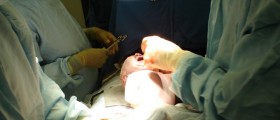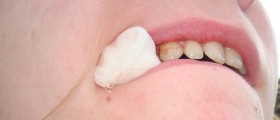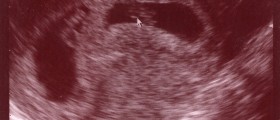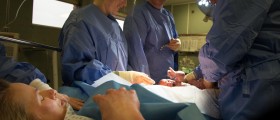Vacuum Assisted Vaginal Delivery
Vacuum delivery may be indicated for various reasons related either to the mother or the baby. This procedure involves the utilization of a vacuum extractor to avoid cesarean section or injury to the baby.
Vacuum-assisted vaginal delivery is associated with a number of risks, but when the vacuum is properly used benefits outweigh the risks for both mother and baby.
Risks of Vacuum Assisted Delivery
Risks of vacuum delivery range from mild cosmetic scalp alterations to life-threatening complications.
External Scalp Markings
This is the frequent result of vacuum deliveries. It involves swelling of a small area of the head. This swelling gives the baby’s head the appearance of a cone-shaped called chignon. This will occur after the vacuum force is applied when the extractor draws the fetal scalp into the cup. The chignon formation resolves within two or three days. Modern plastic or silastic vacuum cups, unlike metal cups used in the past, and less likely to result in swelling of a large area.
About 10% of vacuum-assisted vaginal deliveries result in abrasion of the scalp. These abrasions are usually superficial and nearly always healed without leaving a trace. Scalp injuries are frequently resulting from complicated extended procedures.
Hematoma
Hematoma is a collection of blood under the skin that is the result of bleeding. There are two types of hematoma that occur due to vacuum delivery.
Cephalohematoma is bleeding located under the fibrous covering of the skull bone and it happens in around 6% of infants born by vacuum extraction. There isn’t any particular treatment for this complication and it usually takes up to two weeks to resolve.
Subgaleal hematoma is a more serious form of bleeding and the most feared complication of vacuum extraction. Subgaleal hematoma represents blood accumulated just under the scalp. This occurs when the scalp and the layer of tissue under the scalp are pulled away from the skull thus injuring the underlying veins. Fortunately, this complication rarely occurs. Subgaleal hematoma can also result from forceps deliveries. The advantage of the use of soft plastic vacuum cups is a decreased occurrence of such complications.
Neonatal Jaundice
Jaundice in infants refers to yellow skin color that occurs due to the breakdown of red blood cells and the following production of bilirubin. This may often occur in a baby affected by cephalohematoma or subaerial hematoma.
Intracranial Hemorrhage
It is a very rare complication of vacuum extraction that occurs due to injury of veins and consequent bleeding around the newborn’s brain.
Retinal Hemorrhage
Retinal hemorrhage represents small areas of bleeding on the back of the eyes. This is a common complication that resolves spontaneously.
- Although rare, VE can lead to minor or major neonatal and maternal complications. In fact, 25.7% of vacuum-assisted deliveries in Belgium during the years 2001-2004 resulted in complications that required admission to the neonatal intensive care unit (NICU). Therefore, it is detrimental to measure neonatal health by the Apgar score and assess it through examination.
- The risk of complications increases due to certain factors, such as maternal height and neonatal birth weight. In 2017, an observational study was carried out in six different Swedish delivery clinics and the occurrence of neonatal complications was studied in 596 VEs. The incidence of complications was as follows: cephalohematoma (5.2%), subgaleal hematoma (1.5%), brachial plexus injury (1.3%), and severe neonatal complications (4%), which consist of intracranial hemorrhage, asphyxia, low Apgar score, convulsions, and encephalopathy.
- In this study, a total of 787 patients were enrolled and analyzed. The median (M) age was 30 years (IQR=26-34). The medians were calculated for body mass index (BMI) (M=28.32 kg/m2; IQR=24.75-31.88), gravidity (M=4; IQR=2-5), parity (M=2; IQR=1-4), and gestational age at delivery (M=39 weeks; IQR=38-40). Moreover, the weight of the newborn had a median of 3.04 months (IQR=2.79-3.35). As for the newborn sex, 54.7% were males, 45.2% were females, and one newborn 0.1% was ambiguous.
- This study revealed that vacuum was significantly associated with maternal and neonatal complications. The most common neonatal complication among our sample was chignon. Chignon, “also known as caput succedaneum”, is a temporary anatomical defect that would typically disappear in the first 24 hours after birth and has no clinical long-term effects. Another frequently reported complication is scalp laceration. While less than 1% suffered from scalp laceration in this study, the literature reported a higher prevalence that can reach 82%. The absence of a clear definition for scalp laceration is thought to be the reason for the great gap between the reported percentages
- The most commonly reported maternal complication is perineal tear, which was also high among our population (reaching 20.9%), with second-degree perineal tear as the most frequent subtype (9.3%). Admission to the NICU was considered a complication in the present study, where 7.6% of the neonates included in this study required admission to the NICU. In addition, hematoma was found in 3.4%.

















Your thoughts on this
Loading...